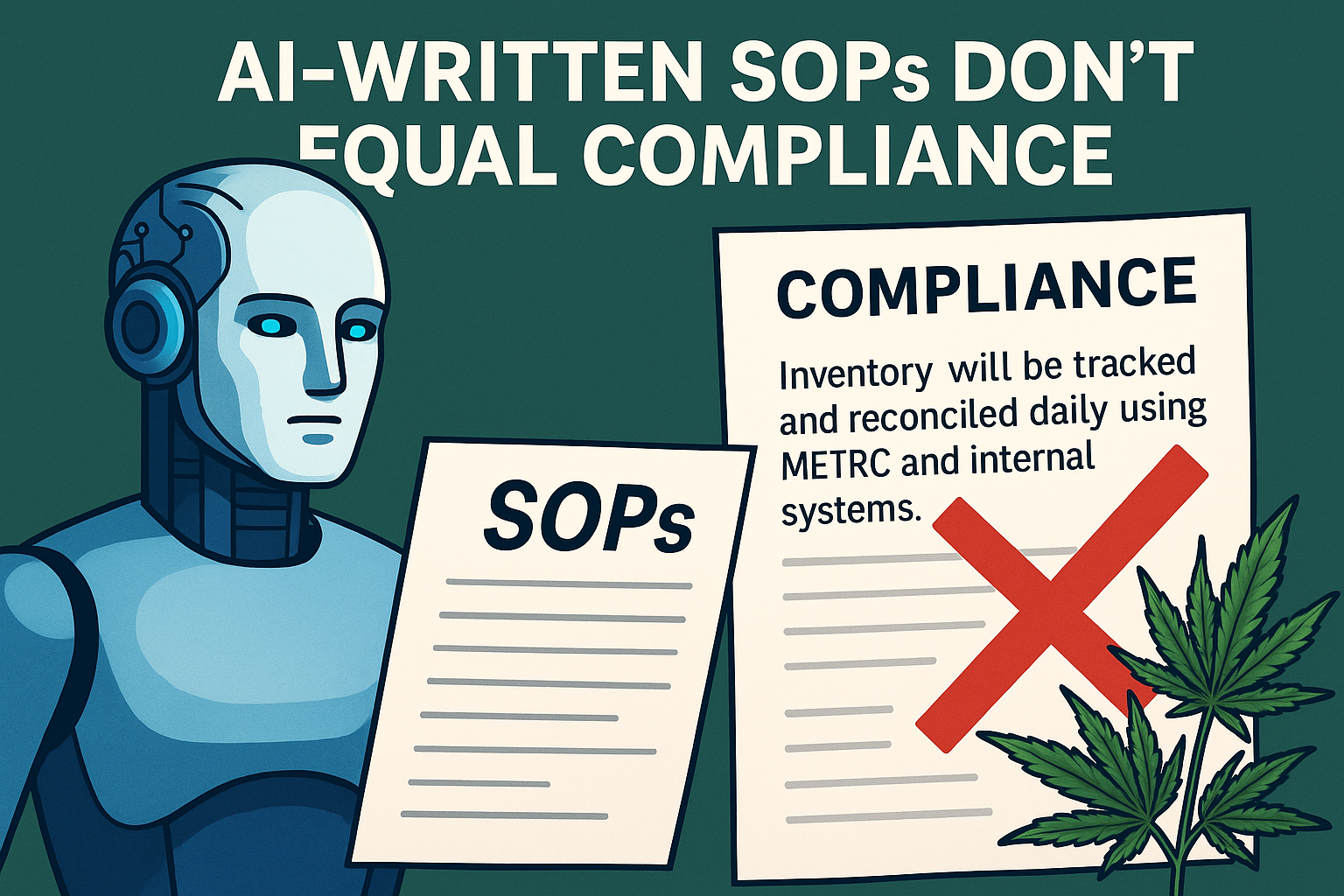
In Part 1 of this series, we talked about the rise of AI tools like ChatGPT for drafting SOPs and compliance docs. There’s no denying the upside: speed, accessibility, and a decent starting point if you’re short on time or budget.
But let’s be clear: a document isn’t a system. And in cannabis, compliance isn’t about what’s written, it’s about what’s followed.
If your SOPs came from an AI prompt, now it’s time to make sure they actually work. Otherwise, you’re playing with risk.
🧱 Words Aren’t Workflows
Here’s a real example of what we see:
“Inventory will be tracked and reconciled daily using METRC and internal systems.”
On the surface? Sounds fine. But in the real world, here’s what matters:
- Who’s actually doing it?
- Which shift, which role, what time?
- Is there a log? A checklist?
- What happens when there’s a mismatch? Who handles it?
If you can’t answer those questions, or show proof of it during an inspection, then that SOP is just filler. Regulators know the difference. And honestly, so do your staff.
📉 SOPs Don’t Fail on Paper, They Fail in Practice
We’ve worked with operators who had “complete” SOP binders sitting on a shelf, and still got fined. Why?
Because the SOPs weren’t:
- Tied to real job roles or training
- Mapped to how the facility actually runs
- Supported by execution tools like logs or calendars
- Updated when rules changed
- Understood or followed by the people doing the work
AI doesn’t know your facility. It doesn’t walk your floor. It doesn’t interview your staff. It gives you a template, not a compliance system. And that’s where most operators get it wrong.
🔧 What iComply Does Differently
At iComply, we’ve spent over a decade in the trenches of cannabis compliance. Our framework doesn’t just review your SOPs, it operationalizes them.
🔍 1. Review and Redline
We don’t just read your SOPs, we watch your processes. We flag risks, fill in the blanks, and make sure what’s on paper matches what actually happens in your facility.
👥 2. Map SOPs to People and Tools
We assign SOPs to specific roles, plug them into your org chart, and build out the execution tools: logs, checklists, training calendars. Compliance has to land on someone’s desk—and no, that “someone” can’t be ChatGPT.
📂 3. Build Version Control + Training Alignment
Your SOPs have to evolve. We help track versions, tie them into onboarding and retraining, and show regulators that your people know the playbook, and follow it.
🛡️ 4. Make You Audit Ready
We create the documentation, tracking systems, and SOP references you need to defend your processes in a real inspection. When the Division walks in, you’ll be ready.
🔐 Regulators Don’t Want a Binder. They Want a System.
Here’s what state inspectors are actually looking for:
- Who does what, and when
- How it’s tracked and verified
- Whether you can catch and fix problems
- That your SOPs are current, version-controlled, and staff-acknowledged
- That there’s a master SOP reference doc with links to each active procedure
That’s what we deliver at iComply: real-world systems that stand up to real-world scrutiny.
Because SOPs don’t protect you—compliance systems do.
💬 Coming Up in Part 3:
AI + Human Oversight: The Smartest Way to Scale Compliance
We’ll talk about how the best operators are pairing fast AI drafting with real compliance experts to save time and stay out of trouble.
📅 Want Help Making Your SOPs Work?
Let’s fix the gaps before the regulators find them. Book your SOP Systemization Session with iComply:
- ✅ SOP audit + risk assessment
- ✅ Role alignment, execution tools, and version control
- ✅ Optional monthly compliance support + training sync

